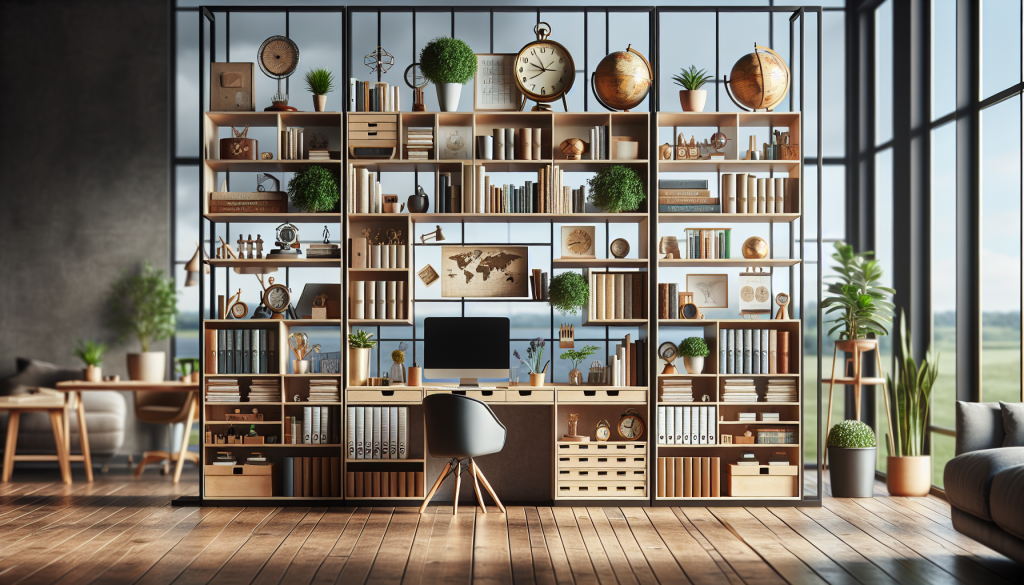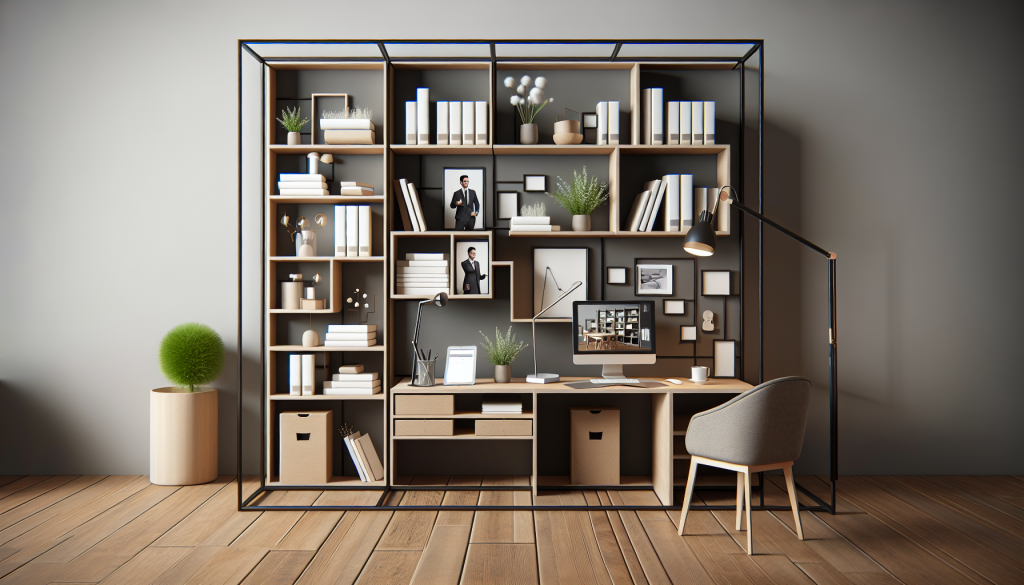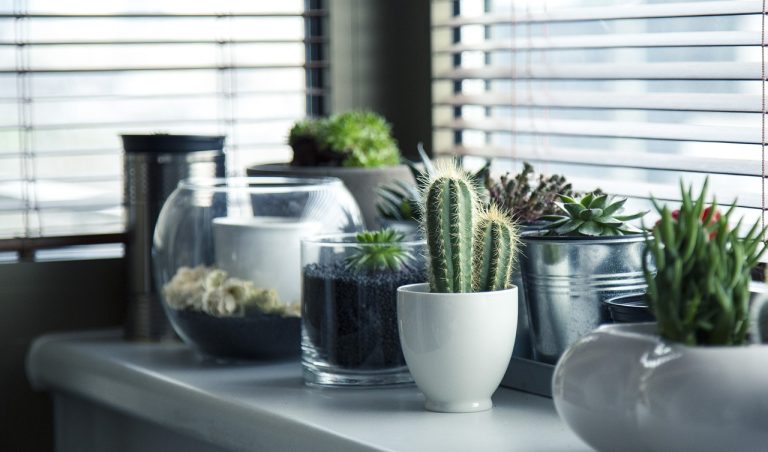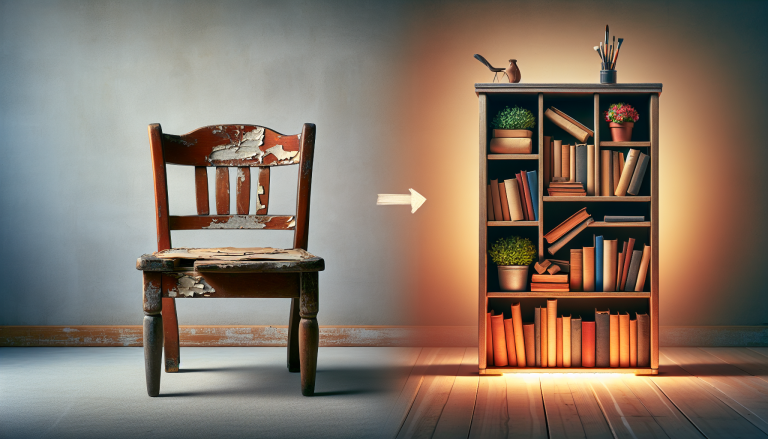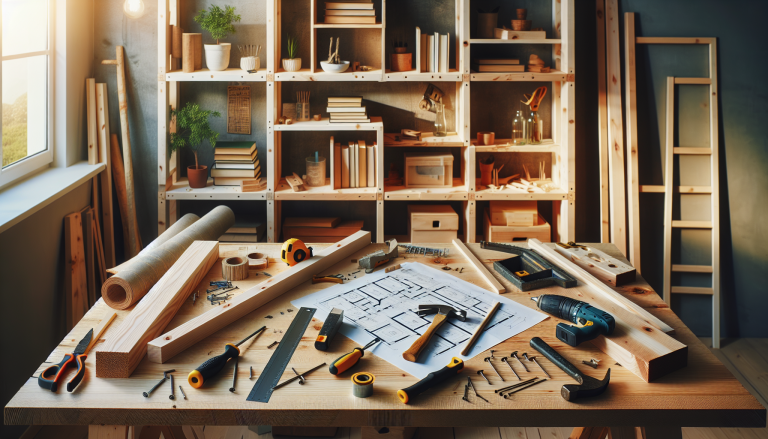So you’ve finally decided to take on the task of building a custom shelving unit for your home office? That’s great! Having a personalized space to organize your books, files, and personal belongings can make a world of difference in your productivity. In this article, we’ll guide you through the steps to create your very own custom shelving unit, from choosing the right materials to assembling and finishing it. With a little bit of patience and creativity, you’ll soon have a stylish and functional addition to your home office that perfectly suits your needs. Let’s get started!
Table of Contents
ToggleChoosing the Right Materials
Determine the Purpose and Size of the Shelving Unit
Before you start building your custom shelving unit for your home office, it’s important to determine its purpose and size. Ask yourself what you will be storing on the shelves and how much space you will need. Are you looking for a small unit to hold books and files, or a larger one to accommodate a variety of office supplies? Knowing the purpose and size will help you select the right materials and design for your shelving unit.
Select High-Quality and Durable Materials
When it comes to building a custom shelving unit, it’s essential to choose high-quality and durable materials. You want your shelves to not only be functional but also long-lasting. Consider materials like solid wood, plywood, or metal, depending on your budget and style preferences. These materials are known for their strength and durability, ensuring that your shelving unit will withstand the test of time.
Consider Your Budget and Style Preferences
When choosing materials for your custom shelving unit, it’s important to consider your budget and style preferences. Solid wood may be more expensive than plywood, but it offers a timeless and classic look. If you’re working with a limited budget, plywood can still provide a sturdy and attractive option. Additionally, think about the style of your home office and choose materials that complement the overall aesthetic. Whether you prefer a modern, minimalistic design or a rustic, farmhouse feel, there are materials available to suit your style preferences.
Design and Planning
Measure the Dimensions of Your Home Office
One of the first steps in designing your custom shelving unit is to measure the dimensions of your home office. Take accurate measurements of the length, width, and height of the space where you plan to install the shelves. This will help you determine the optimal size and layout for your shelving unit, ensuring a perfect fit and maximum functionality.
Consider the Placement and Functionality of the Shelving Unit
When designing your custom shelving unit, it’s important to consider its placement and functionality within your home office. Think about where the shelves will be located and how they will be used. Will they be against a wall, in a corner, or freestanding in the middle of the room? Consider factors such as accessibility, convenience, and aesthetics to ensure that your shelving unit enhances your workspace.
Sketch or Use Design Software to Create a Blueprint
To visualize your custom shelving unit, it can be helpful to sketch a blueprint or use design software. This allows you to plan out the layout and structure of the shelves. Include details such as the overall dimensions, the number of shelves, and any additional features you want to incorporate. Having a blueprint will serve as a valuable guide during the construction process and help you stay organized and focused.
Gathering the Tools and Supplies
Make a List of Required Tools and Supplies
Before starting your shelving unit construction, make a list of all the tools and supplies you will need. Common tools include a tape measure, saw, drill, level, hammer, and screwdriver. Depending on the chosen materials and design, you may also need specific fasteners, sandpaper, and paint or finish. Having a comprehensive list will ensure that you have everything prepared and readily available when you begin the construction process.
Purchase or Gather the Necessary Equipment
Once you have made your list, it’s time to purchase or gather the necessary tools and supplies. Check your existing toolbox to see if you already have some of the required items. If not, visit your local hardware store or browse online to acquire the remaining equipment. Investing in good-quality tools and supplies will not only make the construction process easier but also contribute to the overall quality and durability of your shelving unit.
Prepare the Workspace
Before you begin constructing your custom shelving unit, it’s important to prepare the workspace. Clear any clutter or obstructions to make room for your tools and materials. If necessary, cover surfaces with drop cloths or newspapers to protect them from scratches or spills. Adequate lighting and ventilation are also essential for a comfortable and safe work environment. Taking the time to prepare the workspace will ensure a smooth and efficient construction process.
Construction Process
Begin by Building the Frame
To start constructing your custom shelving unit, begin by building the frame. This involves creating the basic structure that will provide stability and support for the shelves. Use your chosen material, such as solid wood or plywood, to build the vertical sides and horizontal top and bottom pieces of the frame. Make sure to measure accurately and use a level to ensure that the frame is straight and square.
Add Vertical Supports and Horizontal Shelves
Once the frame is built, it’s time to add the vertical supports and horizontal shelves. The number and spacing of the supports will depend on the size and design of your shelving unit. Attach the vertical supports securely to the frame, ensuring they are level and evenly spaced. Then, place the horizontal shelves onto the supports, making sure they are level and well-supported. Secure them in place using screws or other appropriate fasteners.
Secure the Shelving Unit to the Wall
To ensure stability and safety, it’s important to secure your custom shelving unit to the wall. Use appropriate hardware, such as wall anchors or brackets, to attach the unit firmly to the wall. This will prevent it from tipping over and causing accidents, especially if you have heavy items stored on the shelves. Be sure to follow the manufacturer’s instructions and use the correct hardware based on the type of wall and shelving unit you have.
Finishing Touches
Sanding and Smoothing the Surface
After the construction of your shelving unit is complete, it’s time to sand and smooth the surface. Use sandpaper or a sanding block to remove any rough edges or imperfections. This step is crucial for achieving a polished and professional look for your shelves. Take your time and sand the entire surface, including the edges and corners, until it feels smooth to the touch.
Applying a Protective Finish or Paint
Once the surface is smooth, you can choose to apply a protective finish or paint to your custom shelving unit. A finish, such as varnish or polyurethane, will enhance the natural beauty of wood and provide protection against scratches and moisture. Alternatively, you can paint the shelves to match your home office décor or create a unique focal point. Whatever finish you choose, make sure to apply it evenly and follow the manufacturer’s instructions.
Installing Additional Features (e.g., Lighting, Trim)
To truly customize your shelving unit, consider installing additional features such as lighting or trim. LED strip lights can be installed underneath the shelves to provide ambient or task lighting. Adding decorative trim, such as crown molding, can create a more polished and finished look. Explore different options based on your preferences and the overall design of your home office.
Organizing and Decorating
Sort and Organize Your Office Supplies and Items
Now that your custom shelving unit is complete, it’s time to sort and organize your office supplies and items. Take the time to declutter and categorize your belongings, making it easier to find what you need when you’re working. Use storage bins, baskets, or file organizers to keep everything neat and easily accessible. When everything has its designated place on the shelves, it not only improves efficiency but also enhances the overall look of your home office.
Arrange Items on the Shelves in an Organized and Aesthetic Manner
Once your office supplies are sorted, arrange them on the shelves in an organized and aesthetic manner. Consider grouping similar items together and placing frequently used items within easy reach. Experiment with different arrangements, keeping in mind both functionality and visual appeal. By curating a well-organized display, your custom shelving unit will not only be functional but also serve as a stylish focal point in your home office.
Consider Adding Decorative Elements
To add a personal touch and elevate the aesthetics of your custom shelving unit, consider incorporating decorative elements. Decorative objects, such as plants, artwork, or personal mementos, can add personality and create a welcoming atmosphere in your home office. Choose items that complement your overall design aesthetic and make you feel inspired and motivated while you work. Remember to not overcrowd the shelves, allowing each item to shine on its own.
Maintenance and Care
Regularly Dust and Clean the Shelving Unit
To keep your custom shelving unit looking its best, it’s important to regularly dust and clean it. Use a soft cloth or microfiber duster to gently remove dust from the surface of the shelves. If necessary, use a mild cleaning solution and a clean cloth to wipe away any stains or residue. Regular cleaning will not only maintain the appearance of your shelves but also prevent dust and dirt from accumulating over time.
Inspect for Any Damage or Misalignment
Periodically inspect your custom shelving unit for any signs of damage or misalignment. Look for cracks, loose screws, or any other structural issues that may compromise the stability and safety of the unit. If you notice any problems, address them promptly to prevent further damage and potential accidents. Taking the time to regularly inspect your shelves will help you identify and fix minor issues before they become major problems.
Make Necessary Repairs or Adjustments
If you discover any damage or misalignment during your inspection, make the necessary repairs or adjustments. Replace any broken or worn-out hardware, tighten loose screws, and reinforce any weak spots. Carefully examine the entire shelving unit to ensure that it is stable and secure. It’s better to invest time and effort in maintaining and repairing your custom shelving unit to ensure its longevity and usability.
Safety Considerations
Follow Safety Precautions When Using Tools and Equipment
When building your custom shelving unit, always prioritize safety. Follow safety precautions when using tools and equipment, such as wearing protective eyewear, gloves, and using proper technique. Read and understand the manufacturer’s instructions for each tool, and if you are unsure about a particular task, seek guidance from a professional or experienced individual. Safety should always be your top priority during any construction project.
Secure the Shelving Unit Properly to Prevent Accidents
To prevent accidents, it’s crucial to secure your shelving unit properly. Make sure it is securely attached to the wall using appropriate hardware. This is especially important if you are storing heavy items on the shelves, as an unsecured unit can pose a significant risk. Take the time to double-check the stability and ensure that the shelving unit is properly secured before using it.
Avoid Overloading the Shelves
While it may be tempting to fill your custom shelving unit with all your office supplies and items, it’s important to avoid overloading the shelves. Each material and design has weight limits and capacities, and exceeding them can compromise the structural integrity of the unit. Be mindful of the weight distribution and don’t place heavy items on a single shelf or in an unbalanced manner. By following weight limits and evenly distributing the load, you can ensure the stability and durability of your shelving unit.
Troubleshooting Common Issues
Dealing with Uneven or Wobbly Shelving
If you encounter issues with uneven or wobbly shelving, there are steps you can take to address the problem. Start by checking the overall levelness of the unit. Use a level to see if the frame or shelves are straight. If necessary, adjust the supports or tighten any loose screws. You can also place shims or levelers under the feet or supports to correct any unevenness. Taking the time to troubleshoot and fix these issues will result in a sturdy and stable shelving unit.
Addressing Design Flaws or Lack of Stability
Sometimes, despite careful planning and construction, design flaws or lack of stability may become apparent once the shelving unit is complete. If this happens, don’t panic. Evaluate the problem and identify its source. It could be an issue with the materials, design, or assembly. Consider reinforcing the weak points, adding additional supports, or consulting a professional to help rectify the situation. With a bit of problem-solving and creativity, you can overcome any design flaws or stability concerns.
Seeking Professional Assistance if Needed
If you find yourself facing challenges during any stage of building your custom shelving unit, don’t hesitate to seek professional assistance. Professionals with expertise in carpentry, design, or home improvement can offer valuable guidance and solutions. They can provide insights on design modifications, offer suggestions for materials or techniques, or even help with the construction process themselves. Remember, it’s always better to seek assistance when needed, as it ensures the safety and quality of your shelving unit.
Conclusion
Building a custom shelving unit for your home office is a rewarding and fulfilling project. By choosing the right materials, considering the design, gathering the necessary tools and supplies, and following a systematic construction process, you can create a functional and aesthetically pleasing shelving unit that perfectly suits your needs. Remember to prioritize safety, regularly maintain and care for your shelves, and address any issues promptly. With proper planning and attention to detail, your custom shelving unit will not only enhance the organization and efficiency of your home office but also become a statement piece that reflects your personal style and creativity.

